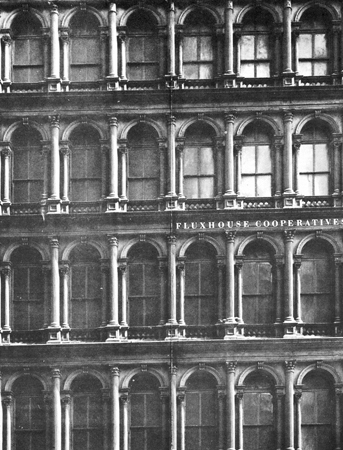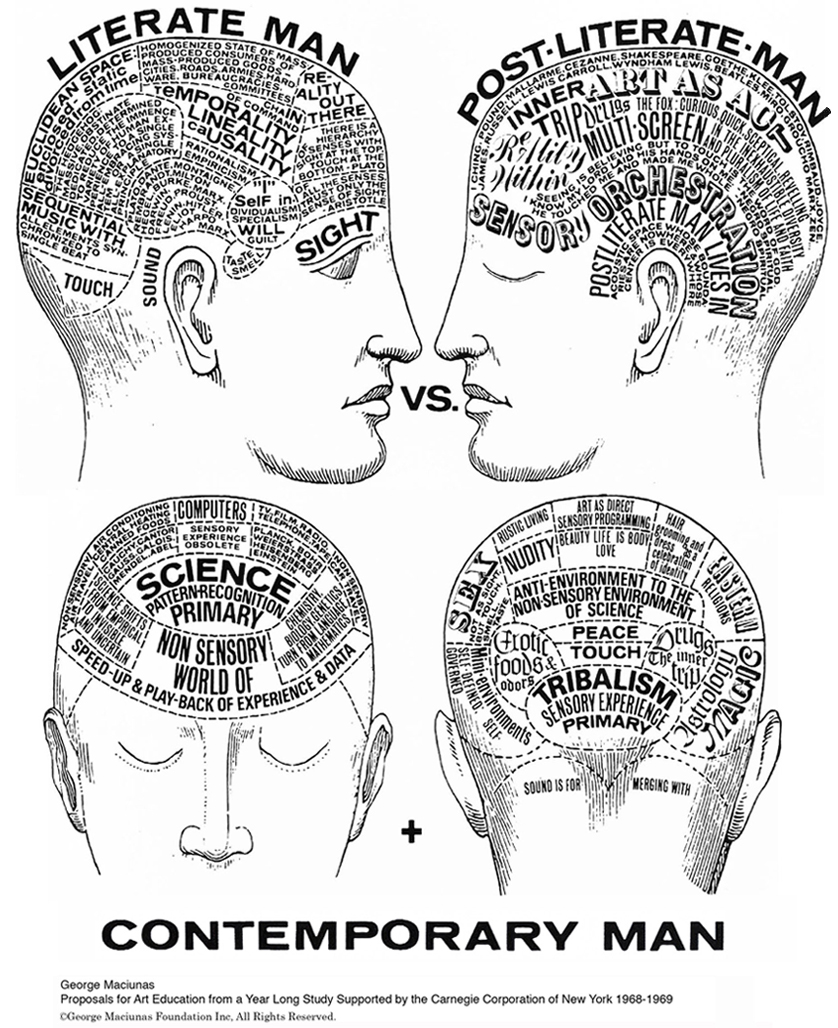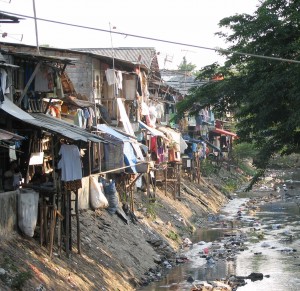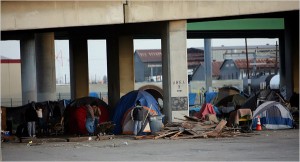Cities in Flux –Part 2
6. Low-Road Buildings and Fluxhouse
“temporary is permanent and permanent is temporary”–Stewart Brand
Evolutionary design is married with economic efficiency in what Brand calls ‘low-road‘ buildings: low visibility, low-rent, no-style, high turnover structures. As these buildings are free of “turf battles because the tuf isn’t worth fighting for”, he states these buildings are valuable precisely because they are inexpensive, thus promoting growth and shifting the value to the work and functions which take place inside. Citing a nobel physicist who stated, “we did some of our best work in the trailers, didn’t we?”, Brand suggests that these spaces are conducive to a creative spirit because projects flourish in low supervision environments.

Modular prototype
Consonant with Fluxhouse, Brand states that a supply of simple, low-cost, easily modified buildings based on an organic design and process of building is essential for social and economic growth. Brand values an organic design and process of building based on four walls which can easily expand and grow as its ideal design. Though Fluxhouse is a prefabricated unit, Maciunas conceived of this modular design as a structure built for adaptation in stating that the design can be customized to residential, institutional, industrial, or agricultural functions, and units can be multiplied to create a single family home, mid-rise building, or a city. Maciunas, who stated “efficiency is giving the most performance for the least cost“, conceived of Fluxhouse as a mass-produced design for the sake of cost efficiency. As high level of production could allow for low cost with much of the production occurring in the factory, Maciunas considered prefabrication as an innovative cost and time effective solution to the process of construction.
Fluxhouse. zen courtyard
Like Brand, Maciunas considered construction, maintenance, and renovation as part of a design process which corresponds to the building’s growth and evolution. His consideration to sustainability is reflected in this eco-friendly design resistant to natural disasters including fires, floods, earthquakes, and hurricanes, as well as deterioration caused by rot, termites, corrosion, and discoloration. Multi-functional and cost-efficient, Fluxhouse demonstrates an ideology which values organic usage over visual theatrics as a mass housing system designed to be sustainable in its production, construction, and use.
7. Fluxhouse Cooperatives
“It makes me vomit the way local developers have started moving in and buying up large buildings. The problem is that the sort of people that are buying them can afford to pay the commercial rates for the pleasure of being in there and so its distorting the market terribly. The thing about areas anywhere in the world and any time where artists have moved in to, the reason why they move into these areas is because spaces are cheap. It would be a very unfortunate thing if this community was broken up by developers selling these spaces off to people who have more money than sense.” –Artist Brad Lochore
In the case of low-road industrial buildings, Brand notes instances in which artists have seized the potential of cheap, well-built, and spacious buildings. As artists move into an industrial neighborhood and creatively renovate the buildings into live-work studios, trendy restaurants and shops move in and transform the neighborhood into a fashionable place to live. Antithetically, the process stops when developers move in and convert the studios into upscale apartments which raises prices and forces artists out.
Fluxhouse Cooperatives
As an urban planner, Maciunas is credited as the “Father of SoHo” for converting industrial loft buildings with artists’ cooperatives known as the Fluxhouse Cooperatives during the late sixties. Like other Fluxus works, Maciunas managed his duties without personal profit. With a grant from the J.M. Kaplan Foundation and the Federal Housing Administration, Maciunas challenged New York City’s M-1 zoning laws to construct the Lower Manhattan Expressway. Conceived by the controversial urban planner Robert Moses, the LME was a vast highway which would have obliterated much of lower Manhattan’s industrial loft district.
Lower Manhattan Expressway (unbuilt)
Though Moses was opposed by dozens of public figures and over 200 community groups, the loft artists’ power effectively stopped Moses: “Opposition to the expressway was going nowhere. Our whole planning board couldn’t even slow it down. Then a handful of artists stepped in a stopped it cold” (South Houston Artist Tenants Association). With the Fluxhouse Cooperatives, Maciunas played a fundamental role in revitalizing SoHo from its condition as a dilapidated post-industrial site and centralized this area as an enclave in which Fluxus’ neighboring movements have flourished.
The Fluxhouse cooperatives were indicative of Maciunas’ broader views as a social planner in conceiving the community through cooperative living arrangements. Rather than expressing personal artistic-intuitive caprices, Maciunas’ corpus of work reflects a search to develop a social and economic dynamic relevant to the built environment and the condition of its social body. Maciunas’ work as an architect, urban designer, and Fluxus coordinator reflects the same ideal of decommodifying and deaestheticizing art in order to merge art with the realities of the concrete world. Like Brand, who described low-road buildings as “genuinely empowering”, Maciunas valued efficient ad hoc design with materials at hand. His “do-it-yourself” aesthetic reflected his goal to turn everyone into an active and knowledgeable participant rather than passive observer. Perceiving Fluxus as “a way of living”, Maciunas’ ‘art’ works was directed towards improving the social milieu by creating the appropriate conditions for a successful community.
As a collectivist, Maciunas’ aesthetic ideology is grounded in ethical concerns of the social condition produced by a consumer culture. As opposed to a unitary vision of the subject, Utrecht Professor Rosi Braidotti states that complex, split, and nomadic conception of the subject constitutes a necessary precondition in considering a global model of ethical practice. Professor Braidotti states that the reciprocality of Kantian or Christian-Judeo morality of “I do that for you, you do that for me” is insufficient as a capitalist driven negotiation of boundaries unable to address ethics on a global scale:
“No! You do that for the love of humanity, because if we don’t do that, there is no going to be a humanity! … And we have to give up a certain notion which, by the year 2010, has lead to an assimilation of progress with further consumption: you will consume more than we did, we consume more than our parents did, our parents consumed more than their parents did… as a consequence of that, now we are at the verge of a catastrophe, financial, environmental, demographic.” Rosi Braidotti
——————————————————————————————
8. Collective Intelligence & Emergence
Maciunas’ collectivist sensibility is consonant with the notion that complex organization emerges from the multiple actions of its dynamic components, materializing the effects of countless simultaneous preferences, choices and actions.Fluxcity was Maciunas’ expression of what has recently been developed as ‘smart-cities‘ derived from studies into advanced communication and storage infrastructure.
Illustrated in the superimposed and transparent maps of the “Atlas of Russian History“, adaptive design is grounded in the notion that the organic evolution of many agencies leads to the development of dramatic and beautiful complexity. In “Design Methods, Emergence, and Collective Intelligence“, mathematician Nikos Salingaros describes this cathartic experience as emergence. Salingaros identifies its properties with information, meaning, learning, and connective subsystems to describe it as “a unity that takes on a ‘life’ of its own”. Understood in past centuries in religious terms as the ecstatic experience naturally associated with a great structure, emergence is analogous to the notion that a whole is more than a sum of its parts as its beautiful quality is an expression of collective empathy and belonging.
Snowflakes forming complex symmetrical patterns is an example of emergence in a physical system
Manifested from the fabric of cultural memory, emergence is analogous to the notion that a whole is more than a sum of its parts. While Salingaros writes that individuals have an advanced capacity for intelligence, he states it is necessary at times to use a combination of minds in order to generate complex mechanisms. As traditional, adaptive ways of building were destroyed by the modernists, Salingaros argues that human intelligence could no longer be extended to the built environment.
Prescribing collaboration to regenerate collective intelligence, Maciunas’ architectural and urban works demonstrate adaptability and flexibility as prime strategies to cope with the nascent instabilities of the world. His atlases, charts, and diagrams are expressions of intelligent systems which can effectively deal with a mass-produced and global culture. In developing learning models, his views as a social planner demonstrate knowledge-based economies in collaborative networks. As a means to overcome the problems of early specialization and fragmentation, these networked conceptions of human relationships reflect the emergence of collective intelligence in a social body.
9. Learning Machine
“Any dynamic complex system, if it is able to do so, will try to organize its complexity as to optimize energy flow. This response or self-organization can be interpreted as a kind of ‘learning’, though it is not always in directions that human beings either approve of or understand.” –Nikos Salingaros

Turing Machine

Learning Machine
By continuous interaction and dialogue, adaptive solutions demonstrate learning processes. Prevalent throughout his corpus of work, Learning and education were primary themes throughout Maciunas’ corpus of work. Regarded by Maciunas as his best work, “Learning Machine” is an unrealized, conceptual model like the Turing Machine conceptualized by mathematician Alan Turing in 1936. Frequently mentioned in philosophical discourse on artificial intelligence, Turing conceived of the machine as a model for computation thus creating the origin of the stored computer program.
Contemporary Man
Reflecting networked processes, Maciunas’ “Learning Machine represents the transcendence of knowledge processing from two dimensions to multi-dimensional modes. As an model of global, contextual knowledge, the “Learning Machine” expresses the manifestation of emergence of human thought processes in the post-modernist epoch. Also reflected in the cranial diagrams of “Contemporary Man”, the “Learning Machine” demonstrates a shift in the Western mentality from linear, sight-based paradigms to symphonic, non-sequential modes of understanding. Rendering emergence in diagrammatic form, Maciunas depicts the morphogenesis of the Western paradigms from its simpler patterns of knowledge processing.
As a social housing system, Maciunas intended the flexible nature of Fluxcity to create new urban morphologies based on the motion of daily life and the needs of the city. Prescriptive rather than visionary, Maciunas diagnosed the pathologies of mass-housing through reconceptualization of its unit and the patterns into which it may evolve. Like the transcendence of knowledge in “Learning Machine”, Fluxcity imitates the process by which unstructured networks like the internet have manifested structure through the collective intelligence of its users and designers. Achieved through total cost-efficiency by factory production, the aesthetic ideology of Fluxcity demonstrates the potential to cultivate infinite possibilities for different ‘programs’ as an urban solution.
10. THE MODERN URBANIZATION OF FLUXCITY
“Efficiency is giving the most performance for the least cost”– George Maciunas
In current socio-economic trends, contemporary conceptions of Fluxcity may be realized through the construction of a ‘green’ city. Maciunas’ philosophy of complete economic efficiency is feasible with self-sustainable methods achieved by an economical construction process and urban design solutions which promote low running costs to maintain the city. In promoting the condition in which economic freedom spurs high levels of innovation and creativity, Maciunas’ conception of Fluxhouse is consonant with the notion that property is inexpensive and the work taking place inside is valuable. Achieved by mass production, Fluxcity holds its greatest potential as a quick and affordable solution to a host of pressing social housing problems.
Slum
Tent city in US
Realized on a global scale, Fluxcity may be used as a social housing system to urgent situations such as shantytowns. As the world’s fastest growing urban habitat, slums are areas that exist outside of an official city grid and lack safe water and sanitation, public services, basic infrastructure, and quality housing. According to the UN News Center, the number of people residing in these slums have risen from 777 million in 2000 to 830 million in 2010. The number is expected to rise to 900 million in 2020 unless drastic action is taken. In the United States, tent-cities have cropped up across the country from Seattle, Washington to Athens, Georgia since the foreclosure crisis began in 2007. With these modern day Hoovervilles, homeless advocacy groups and city agencies have reported the most visible rise in homeless encampments in a generation.
Christoph Gielen "Untitled IV" Arizona 2010
Fluxcity may also be used to resolve urban and suburban sprawl in the United States by creating infrastructure and improving quality of life as a social project. Achieved on a national scale, the construction of a new housing project may stimulate the economy and improve the social fabric of communities. The last project of this scale was achieved by Robert Moses, who dramatically changed American culture by building highways, bridges, and parks in New York in the mid twentieth century. As the shaper of the modern city, his philosophy for a car based culture influenced urban planners across the country and has precipitated the decline of public transportation while producing greater greenhouse emissions.
In the context of the current economic depression, relief for the lower and middle class may be achieved through grand scale national economic programs like Roosevelt’s New Deal. Shifting from a consumer system of cars and single family houses towards community based urban designs may be a step toward resolving many of the country’s social, economic, and ecological issues. As a federally sponsored solution, Fluxcity would gentrify communities while creating jobs, thus acting as a triple solution in amending housing crises, resolving unemployment, and generating social welfare.







